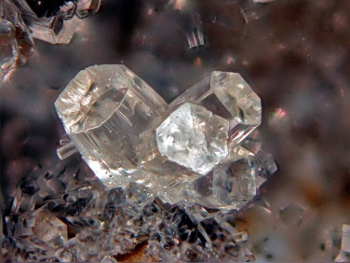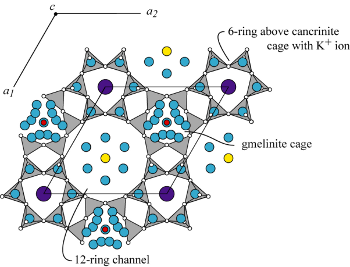
Hardness: 4 .
D = 2.13 gm/cm3.
Luster: vitreous. Streak: white.
ω 1.489 - 1.495, ε 1.486 - 1.492, δ 0.003 - 0.005
(Passaglia and Tagliavini 1994)
Space Group: P6m2, Z = 1
Gard and Tait (1972) suggest that the B 6-membered rings are Al free, while Alberti et al. (1996) and Gualtieri et al. (1998) found random distribution of Al between both kinds of 6-membered rings, similar to the other 6-membered ring zeolite structures

Because the structure is similar to that of erionite, it is possible to have stacking faults within an offretite crystal. If the erionite domains are very small, they can only be detected with electron diffraction, but large domains of erionite, e.g. as included microcrystals, can be detected with x-ray powder diffraction methods (Passaglia et al. 1998).